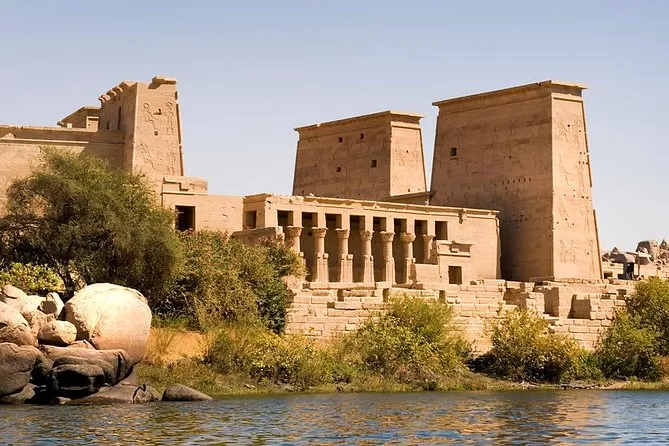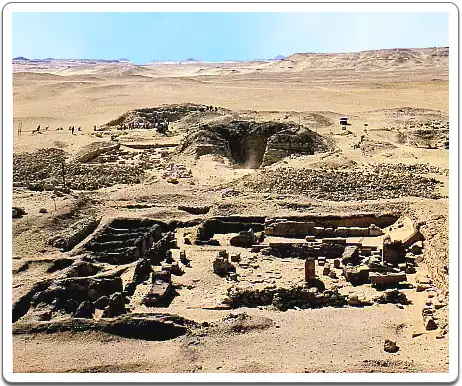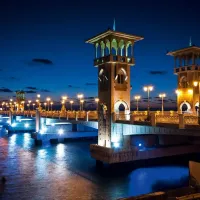Unveiling the Mysteries of the Abydos Temple: Exploring Ancient Egypt's Hidden Gem

The temple's design also reflects the ancient Egyptians' fascination with cosmic alignment. The temple's layout is believed to be aligned with the constellation of Orion, which held great significance in their cosmology. The Abydos Temple is a testament to the ancient Egyptians' profound understanding of the universe and desire to connect with the divine. This Temple was built during the reign of King Seti I and was finished by the following two generations, his son and grandson, Ramses II and Merneptah.
The Temple of Seti I is famous in Egypt, located in Abydos, the 8th province of ancient Egypt. The area is considered among the most famous archaeological sites in the world. In ancient times, it was called Abdu, and the Greeks called it Abydos. The area includes one of the most famous temples in Egypt.
A burial in Abydos was the ultimate honor for any local. Abydos is home to many tombs belonging to the 1st and 2nd Dynasties. Also, many Kings built temples here, including King Pepi I, King Ahmose I, King Seti I, and King Ramses II. Ancient Egyptians believed that the tomb of Osiris, the "God of the Dead and the Underworld," was located in Abydos, where his head was buried.
The Abydos Temple carvings and their symbolism
One of the most captivating aspects of the Abydos Temple is its elaborate carvings, which adorn its walls and pillars. These intricate artworks depict various scenes from ancient Egyptian mythology and offer a glimpse into the beliefs and rituals of the time.
The carvings at the Abydos Temple also hold symbolic meaning. They often depict the pharaohs engaged in religious ceremonies and rituals, emphasizing their role as divine intermediaries between the mortal world and the realm of the gods. The hieroglyphs and symbols carved into the temple's walls provide valuable insights into the ancient Egyptian language and culture, allowing us to unravel the secrets of this fascinating civilization.
The Abydos Temple and the King List
The Abydos Temple is renowned for its association with the King List. This ancient Egyptian document lists the names of pharaohs from the earliest dynasties to the reign of Seti I. This invaluable historical record provides insights into the lineage and chronology of the pharaohs who ruled ancient Egypt.
The King List inscriptions at the Abydos Temple are of immense historical significance, as they help historians piece together the puzzle of ancient Egyptian history. The temple's walls are adorned with hieroglyphic inscriptions, meticulously documenting the names of the pharaohs and their reigns. This ancient chronicle provides a window into the political and cultural developments of ancient Egypt, offering a fascinating glimpse into the lives of its rulers.
Unraveling the mysteries of the Abydos Temple: Exploring its hidden chambers.

The Abydos Temple holds many secrets within its ancient walls. Over the years, numerous explorations and excavations have uncovered hidden chambers and passages, adding to the intrigue and mystique of this sacred site. These hidden chambers offer a tantalizing glimpse into the rituals and ceremonies within the temple's hallowed halls.
One of the most significant discoveries within the Abydos Temple is the Osireion, an underground structure believed to represent the tomb of Osiris. This enigmatic chamber is adorned with intricate carvings and hieroglyphs depicting scenes from the Osiris myth. Exploring the hidden chambers of the Abydos Temple is like stepping back in time, allowing us to unravel the mysteries and secrets of this ancient civilization.
The Abydos Temple helicopter hieroglyph: Fact or fiction?

One of the most intriguing and controversial aspects of the Abydos Temple is the presence of a hieroglyph that appears to resemble a helicopter. This anomalous carving has sparked speculation and debate among archaeologists and enthusiasts alike. Some theories suggest that it could be evidence of ancient Egyptians possessing advanced technology or even contact with extraterrestrial beings.
However, the prevailing consensus among experts is that the helicopter hieroglyph is a product of erosion and coincidental overlapping of hieroglyphs. The ancient Egyptians were known for their vivid and imaginative symbolism, and this particular carving is likely a result of artistic license and the natural degradation of the stone over time. While it remains a fascinating curiosity, it is important to approach such claims skeptically and rely on scientific evidence to understand ancient Egypt.
When and why was the Abydos Temple built?
The Abydos Temple was built during the reign of Pharaoh Seti I, who ruled Egypt from 1290 to 1279 BC. Its construction was part of Seti I's efforts to revive Osiris worship and restore Abydos's prominence as a religious center. The temple served as a testament to Seti I's devotion to Osiris and his desire to ensure a prosperous afterlife for himself and his descendants.
The construction of the Abydos Temple also served a political purpose. Seti I sought to solidify his legitimacy as a pharaoh by associating himself with the revered god Osiris. By constructing a grand temple dedicated to Osiris, Seti I aimed to portray himself as a guardian of Egyptian tradition and a worthy successor to the pharaohs of old.
Exploring the Abydos Temple: What to see and do on a private tour
For those fortunate enough to visit the Abydos Temple, a private tour offers an unparalleled opportunity to immerse oneself in the ancient wonders of Egypt. As you step through the temple's towering entrance, you will be transported back in time, surrounded by the exquisite artistry and spiritual energy that permeates this sacred site.
During your private tour, explore the temple's main hall with stunning columns and vibrant carvings. Marvel at the intricate details that bring ancient Egyptian mythology to life and take a moment to soak in the profound sense of history that envelops you. As you wander through the hidden chambers and corridors, guided by the flickering light of torches, you will be captivated by the secrets that lie within.
A highlight of any visit to the Abydos Temple is the opportunity to witness the breathtaking beauty of the Osireion. Descend into the depths of this underground chamber and marvel at the grandeur of its architecture and the intricate carvings that adorn its walls. This mystical space offers a glimpse into the ancient rituals and beliefs that shaped the lives of the ancient Egyptians.
Conclusion: The enduring legacy of the Abydos Temple in Ancient Egypt
The Abydos Temple is a testament to the ancient Egyptians' ingenuity, spirituality, and artistic brilliance. Its towering pillars, intricate carvings, and hidden chambers offer a glimpse into a civilization that revered its gods and sought to immortalize its pharaohs.
As we unravel the mysteries surrounding the Abydos Temple, we gain a deeper understanding of the rich tapestry of ancient Egyptian culture and history. This hidden gem of ancient Egypt continues to captivate and inspire, drawing visitors from around the world to marvel at its wonders. To experience the magic of the Abydos Temple is to embark on a journey of discovery and awe, where the past comes alive and whispers its secrets to those willing to listen.
If you are fascinated by the wonders of ancient Egypt, a private tour of Abydos and the nearby Dendera Temple is an experience like no other. Immerse yourself in the mystical world of the pharaohs and uncover the secrets of these awe-inspiring sites. Book your private tour today and embark on a journey to transport you back.


















-askaladdin.webp)
-askaladdin.webp)











